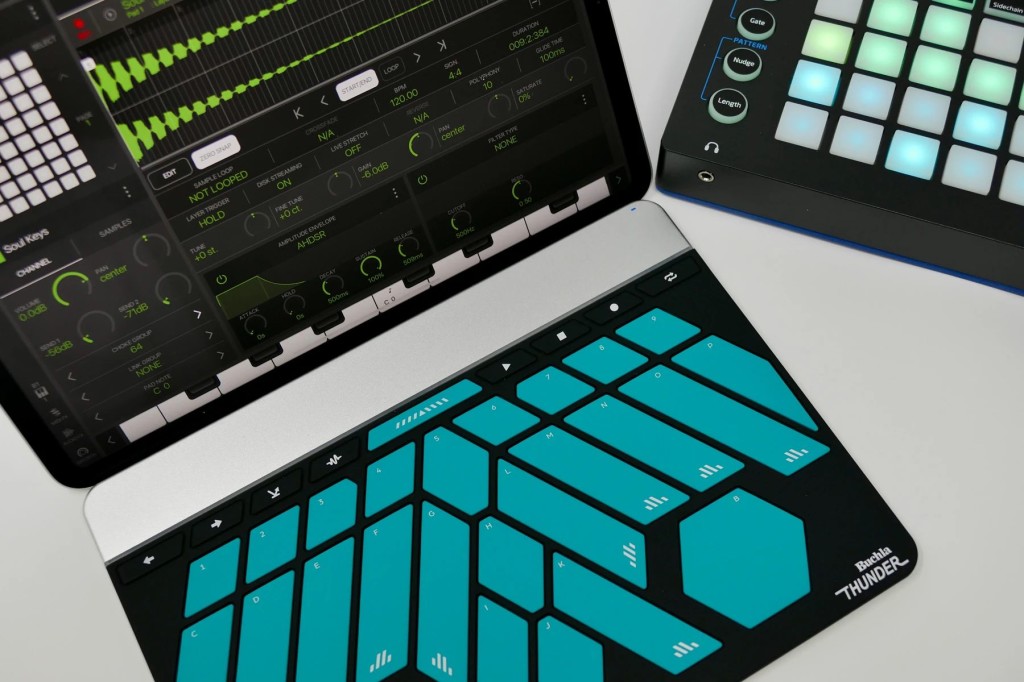DIY music instrument making with visual patching is like having a blank slate. Now there’s some blank-slate hardware to match.
The Sensel Morph is simply brilliant. It’s about as easy an entry into multi-touch expression you can get under your fingers – terrifically sensitive, fabulously portable and compact, and via overlays something you can give any number of tactile layouts. You can use it to make your own instruments, or control lighting or visuals or 3D or whatever else you imagine.

With open-ended expressive possibility, you might want equally open-ended software. If more expression makes you start to imagine new possibilities for sound and visuals, you want to translate those ideas quickly.
You could already use the Sensel Morph with Pure Data, the free Mac/Windows/Linux software for music and multimedia. But today Sensel has announced they’re releasing some free tools that make it easier – for even quicker hacking.
They worked with none other than our friends at Virginia Tech and the Linux Laptop Orchestra (L2Ork) – which means it’s already been tested by people who want to work with this environment quickly and efficiently.
And whereas the oldskool approach was to map expression to your patch … one … parameter .. at a time … from scratch … each time … now they instead work with an API so you can build stuff fast. (It’s still a patching environment, so you can always go down to the from-scratch level when you need.)
Watch. These examples are maybe not fantastically musical (well, depending on your taste), but they do show how the mappings work. Stick them in your patches and make whatever music/visuals you want.
How to get started
For the customized (Virginia Tech-alum) Purr Data distribution of Pd, the Sensel object and examples included now in the latest build.
For Pd Vanilla – the same version upon which support in iOS, Android, and other libpd environments is based – you can install via the excellent Deken add-on management environment.
First, updated versions of vanilla are available directly from Pd (and original Max/MSP) creator Miller Puckette:
http://msp.ucsd.edu/software.html
Once installed, choose Help > Find Externals and then type in ‘sensel’ so Pd can build for your platform. It looks like deken support may not be totally baked across platforms, though, so you may still want to head to GitHub (or start with Purr Data first).
Everything is on Git:
https://github.com/sensel/PD-objects
I couldn’t yet get this working on Windows, but it may be that they haven’t quite synced up the builds of the external just yet. Stay tuned. On Mac and Linux I suspect you may be fine; I haven’t had a chance to boot up the other OSes yet.
The Sensel Morph is wonderfully sensitive. You need to have one in-hand to feel this, but the tiniest movement of your finger and the most minute variation in pressure gets accurately sensed. (That’s not something the iPad can do – it has no real force sensitivity, and you don’t get the sort of precision of x/y, either, or the number of contact points. It’s not a criticism of Apple, it’s just Apple is making a device with a specific use case – the Morph is only about control.
The [sensel] object reads up to 16 contacts and all the pressure/positioning data so you can use that in your patches. Then there are multiple examples with different mappings to show how that translates to a patch:
With Pd, you can access a bunch of information:
- contact point number
- contact status (0=invalid , 1=start , 2=move , 3=end)
- orientation
- major axis
- minor axis
- delta x
- delta y
- delta force
- delta area
- min x
- min y
- max x
- max y
- peak x
- peak y
- peak force
- x position
- y position
- total force
- area
You also can discover and connect automatically to your Morph, saving the usual trouble of configuring inputs right before a gig. That works with multiple Morphs, too, in case you really dig into the #senselyfe.
It all provides far more depth than just the usual MIDI/MPE implementation. And now that this API is structured this way – and there’s a free tool to prototype with – I immediately am curious about other environments. (I may have to just code my own Sensel module for VCV Rack for instance.)
I only found out about this late last night, so I’ll try and give it a shot and follow-up with more – and I’ll probably also use the Buchla Thunder overlay a bit, too.
https://sensel.com/pages/the-sensel-morph